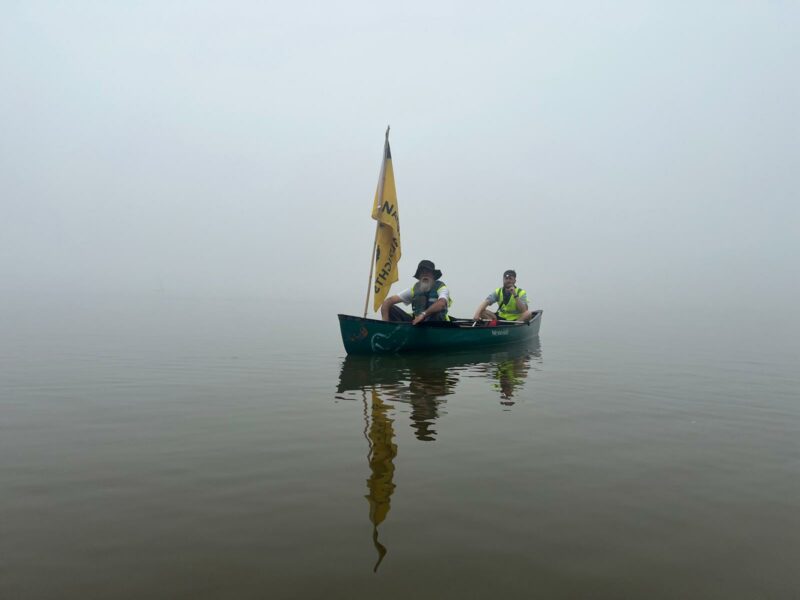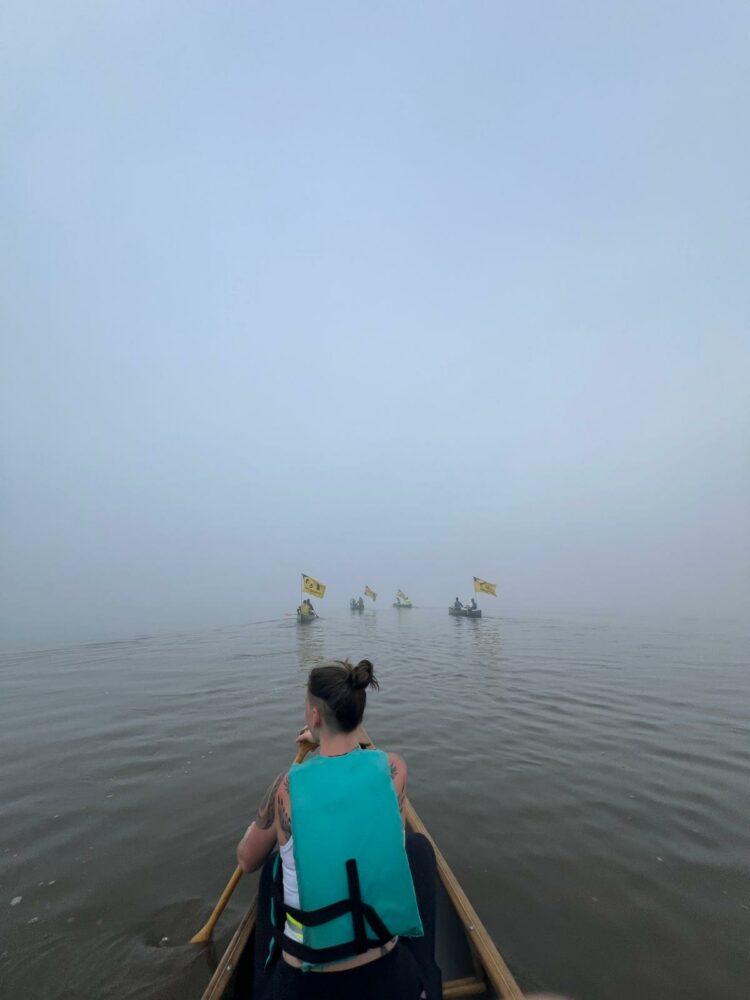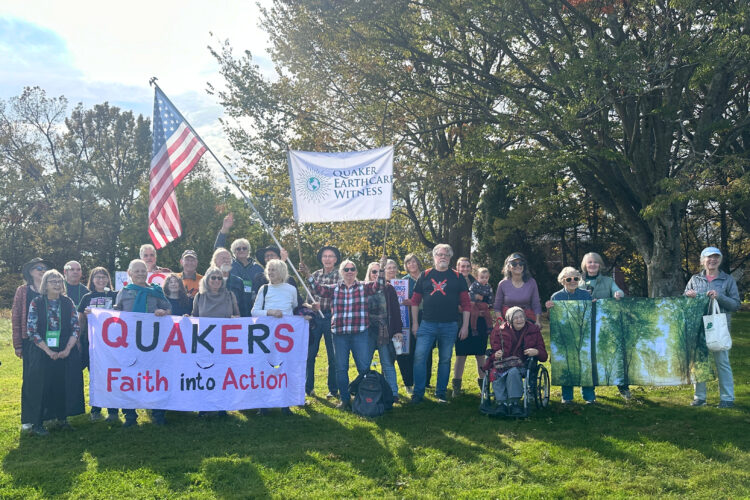Walking with a River’s Spirit: Finding Earthcare on the Path to Justice

by Lena Parker, Jess Hobbs Pifer, Ross Brubeck, and Nathan Shroyer
Last May, Friends walked 276 miles and canoed five from Flushing, Queens, to Washington, D.C., inspired by the Flushing Remonstance, a 1657 document written not by Quakers, but for Quakers, during a time when Quakerism and other forms of religious expression were illegal in what is now New York. Today, we are witnessing grave violations of the rights of immigrants in America. This walk was to respond “to those who say undocumented immigrants are destructive to our nation and its values; they themselves misunderstand our nation and its values. American nationhood is not an ethnicity nor a mundane coincidence of culture. It is a set of sacred principles.”
The walk was not just about reaching a destination. For that, we would have hopped in our cars. Instead, it was about the spiritual and communal experience of the path itself.
On the 13th day, the walkers became rowers as we crossed the Susquehanna River in canoes belonging to the Baltimore Yearly Meeting’s camp program. The river, a potent symbol of interdependence and the promise of a connected Creation, turned into a moment of miraculous synchronicity and faith.

Nathan Shoyer shared a spiritual connection to the river, retelling the story of Ezekiel.
“In Ezekiel 47, Ezekiel is brought to the temple that was promised to the Jewish people to replace the temple that had been destroyed. Under the temple, there is a trickle of water flowing out of it. With the angel, Ezekiel walks into the shallow river, which continues to become deeper until it can’t be crossed, it’s gotten so deep and so strong. The passage says that this river will feed the oceans and the fishes will come to it, that the river is lined on both sides with fruit trees in abundance. The river says you are going to get the promise of creation, you can be on your side of the river and the other side, our beings, our trees, our plantations of fruit and abundance, that is also part of creation. This is the interdependence, the basis of empathy, understanding that there is enough.”
Lena Parker shared a story about the comical metaphor of the crossing.
“Crossing the Susquehanna was a comically apt metaphor because it was so foggy we couldn’t see the other side. We couldn’t see more than 10 feet ahead of us and had to stick with each other to not lose each other, but we knew we would get there together.”
Jess Hobbs Piffer shared this quote with Luis Andres Henao of the Associated Press.
“It feels really daunting to be up against such critical and large and in some ways existential threats, I just have to put one foot in front of the other to move towards something better, something more true to what Quakers before us saw for this country and what people saw for the American experiment, the American dream.”
Ross Brubeck shared a perspective on the river crossing, seeing it as a religious experience.
“I’m gonna say that the river crossing it was one of two spiritual centers for me in the whole walk, and I didn’t expect it to be. I’ve never had an experience like that with so many people. The slate, the visual slate, was utterly clean. There was nothing in the foreground or background. It was just us on a river.
I’ve thought about the idea of a religious experience as being a shared totality of perception. I can’t say how many miracles like that happened on this walk, but the thing that stands out for me as evidence of these miracles was the river, and that we were all seeing the same thing, which was nothing.
We could not discern what was in front of us, which is the entire idea of the walk in the first place was to walk into something that we couldn’t understand or recognize, and to move through it with faith.”
The walk serves as a potent reminder that our most meaningful work is often found in the humble, collective steps we take together. We embraced an anti-efficient action and an approach rooted in mutual aid, offering a living testament to the power of human connection and a willingness to be vulnerable in the face of the unknown.
This journey of faith, and this willingness to step into the fog with trust, embodies a core truth of Quaker Earthcare Witness: that a right relationship with all of Creation is built not on easy answers, but on our shared commitment to one another and to Earth. The walk, like the river, reminds us that while we may not see the other side, there is enough for everyone on both banks, and that by putting one foot in front of the other, we can continue to move toward a world more aligned with peace.

Learn more about the Quaker Walk to Washington

